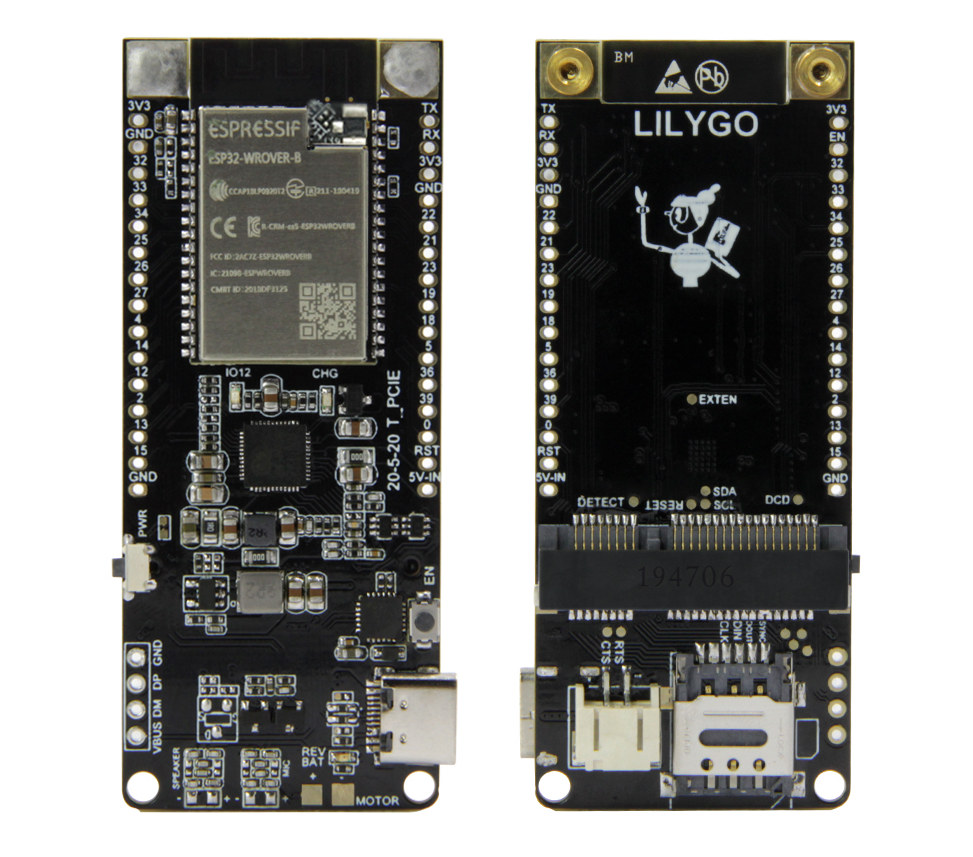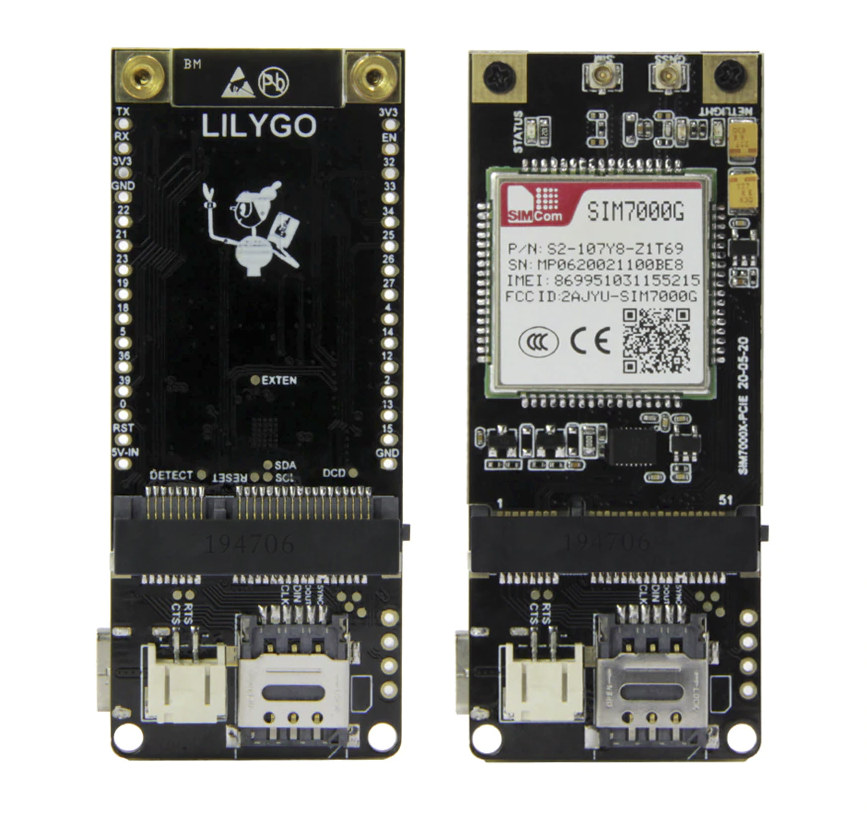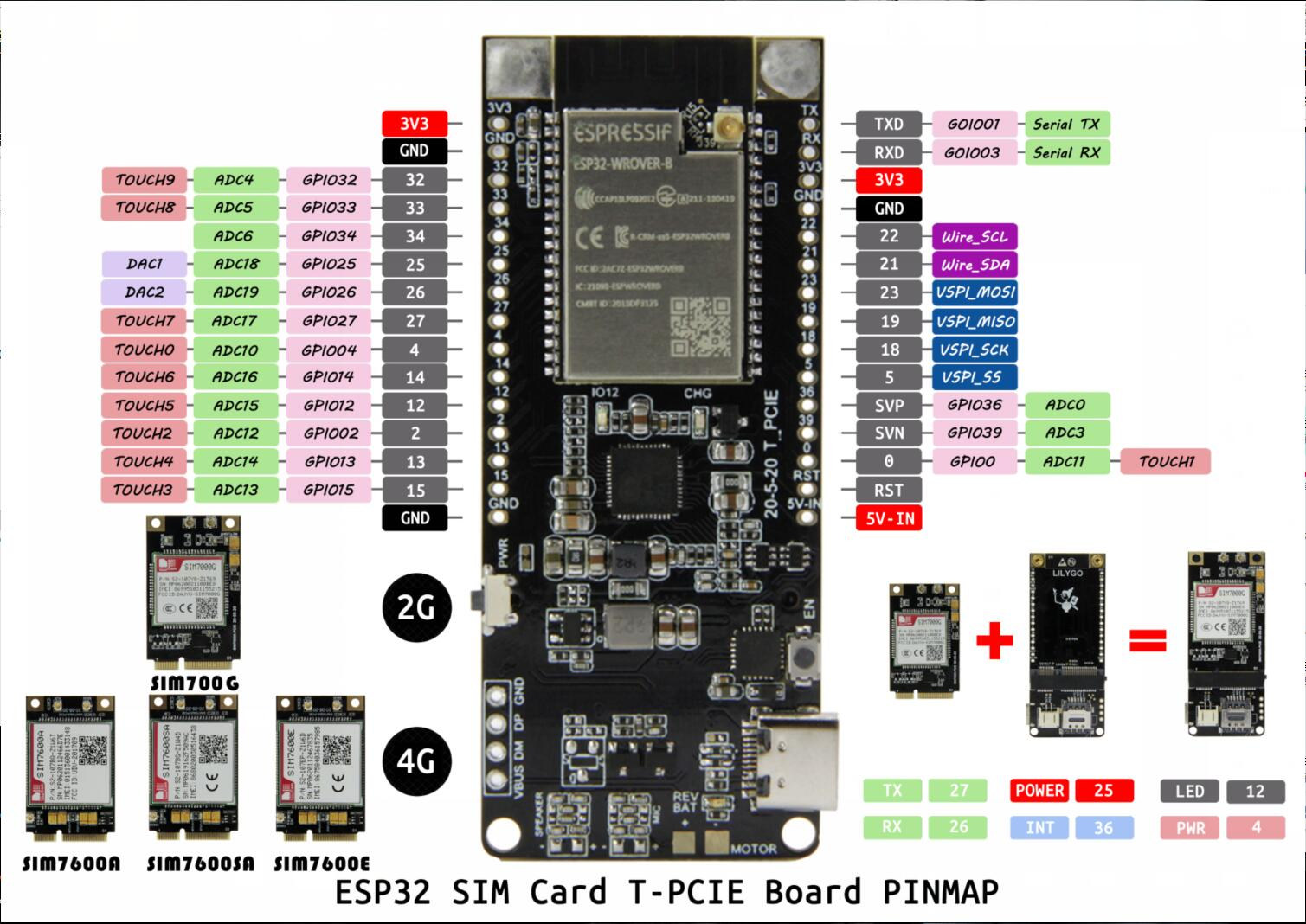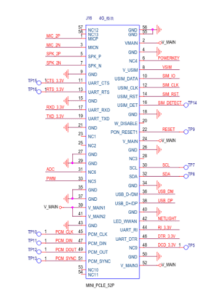LilyGO has launched yet another ESP32 WiFi & Bluetooth IoT board. As its name implies, TTGO-T-PCIe board includes a mini PCIe socket that coupled with a SIM card socket allowing users to insert a 4G LTE mPCIe card to add cellular connectivity.
The company also offers optional SIM7000 2G or SIM7600 4G LTE modems that come with LTE and GPS antennas. You should probably be able to add other cellular mini PCiE, as well as other wireless mPCIe modems for LoRa, Satellite communication, etc… (Finally most probably not)

TTGO-T-PCIe board specifications:
- Wireless module – ESP32-WROVER-B with ESP32 dual-core wireless SoC with 520KB SRAM, WiFi and Bluetooth with on-board antenna, as well as 4MB flash, and 8MB PSRAM
- Connectivity
- 802.11 b/g/n WiFi 4 up to 150 Mbps (ESP32)
- Bluetooth 5.1 LE (ESP32)
- Optional wireless cards via mPCIe socket (I2C and UART), SIM card slot for 2G and 4G LTE cellular networking
- USB – 1x USB-C port, 1x 4-pin USB header
- Expansion
- Mini PCIe card slot
- 2x 15-pin unpopulated headers for GPIOs, ADC, touch, DAC, UART, SPI, I2C, SVP/SVN, Reset, 5V in, 3.3V and GND
- Debugging – USB-C port via CP2104 USB to TTL chip
- Misc – Power Switch, EN button, 40MHz crystal oscillator
- Power Supply
- 5V/1A via USB-C port
- 5-pin JST connector for 3.7-4.2V battery
- AXP192 power management IC
- Sleep current – About 700ma
- Dimensions – 75 x 33 x 10.5 mm (with card?)
- Weight – 14.5 grams
 The four optional SIMCom mPCIe cards offered by the company:
The four optional SIMCom mPCIe cards offered by the company:
- SIM7000G Module for 2G cellular connectivity as pictured above
- SIM7600SA 4G LTE module with 2G/3G fallback for Australia, New Zealand, and South America
- SIM7600E 4G LTE module with 2G/3G fallback for Europe (EMEA), South Korea, and Thailand
- SIM7600A 4G LTE module with 3G fallback for North America
Arduino and Platformio samples based on TinyGSM library, as well as schematics and datasheets, can be found on Github.

LilyGO TTO-T-PCIE board is sold on Aliexpress for $8.66 shipped with headers and battery wires. The wireless cards listed above can be found on the same link for $25.20 for the 2G mPCIE card, and $35.49 for the 4G cards. The recently-launched Rockchip RM310 4G LTE mini PCIe card ($16 plus shipping) might be an interesting add-on provided it’s electrically compatible [update: very likely not compatible] and gets a port to Arduino’s TinyGSM library.

Jean-Luc started CNX Software in 2010 as a part-time endeavor, before quitting his job as a software engineering manager, and starting to write daily news, and reviews full time later in 2011.
Support CNX Software! Donate via cryptocurrencies, become a Patron on Patreon, or purchase goods on Amazon or Aliexpress





I’m really curious to understand how this is supposed to work. The mPCIe modems have USB interfaces, but the ESP32 doesn’t. According to the example projects on the GitHub repo, the connection from the ESP32 to the modem is via UART. But mPCIe doesn’t specify UART signals on the connector (https://pinoutguide.com/Slots/mini_pcie_pinout.shtml). So it seems that maybe some of the reserved pins are being reused for this, but if that is non-standard, how likely is it that the mPCIe modem that you choose will be wired appropriately?
Good point that’s probably proprietary and other cards won’t work. Somehow I was thinking about the USB OTG port inside ESP32-S2, but there’s none here. I can see USB on the mini PCIe connector, but it looks it can only be accessed by a host via the 4-pin USB header on the board. So it looks to be usable as an external USB modem using the 4-pin USB header.
Pin 17 and 19 (both reserved on mPCIe specs) are used for Rx and Tx.
https://www.texim-europe.com/getfile.ashx?id=121301
UART is on pins 11,13,17,19,23,25
Not exactly sure how this works, but the UART pins may initially be disabled and then the host does something to turn them on. That would stop them from conflicting with PCIE signals. For a real PCIE socket you’d use the USB signals and leave the UART disabled. The host would only instruct the module to turn on UART mode if the host knows it is safe to do so.
SIM7000 is a Linux device with lots of memory, CPU and I/Os, including audio! Why would anyone cripple it by connecting to a ESP32?
Firstly, SIM7000 is not a Linux device, but a 4G module manufactured by SIMCom Wireless Solutions. It is designed for Internet of Things (IoT) applications and provides cellular connectivity to devices that require remote data transmission and access.